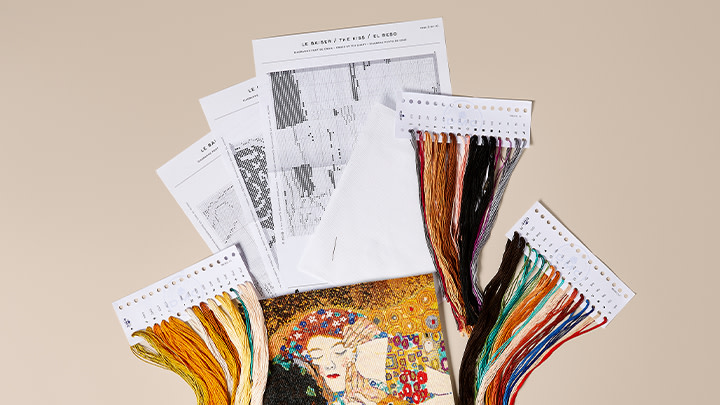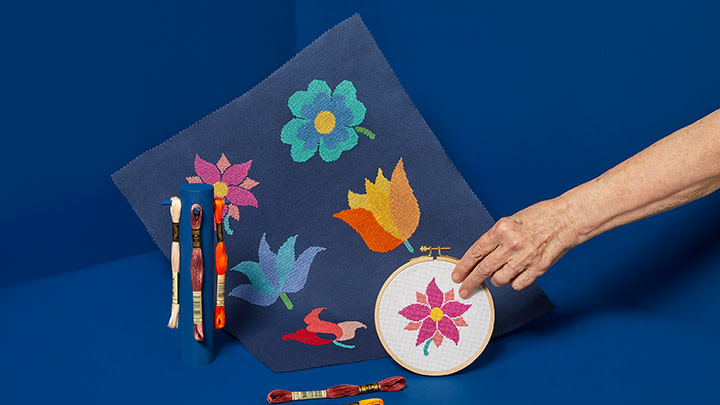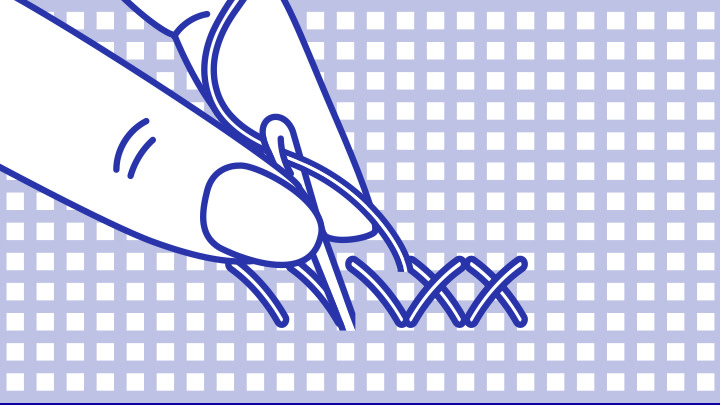Cross stitch designs are usually not preprinted on the fabric, instead a chart shows you where to place stitches and which thread to use for each stitch. They might look complicated but cross stitch charts are very easy to follow once you know how to read them.
Your cross stitch chart contains all the information you need to stitch your design. The squares on the design chart correspond to the squares on the fabric. Every square on the design chart that requires a stitch will contain a symbol.
The most common stitch on your chart is the cross stitch. Where the square on your Design Chart contains a symbol taking up the full square, a full cross stitch is required.
The second most common stitch is the backstitch. Backstitches are generally used as outlining or lettering. When a square contains a straight line or dotted line that joins two corners, a backstitch is required. Less common stitches are half stitches, quarter stitches and three-quarter stitches, also referred to as fractional stitches.
The pattern will usually be broken up with larger grid lines to make it easier for you to count blocks of stitches.
It is important that you center your design on your fabric. Patterns usually indicate this center, in this example follow the four arrows on the design, where they all intersect is the center point.
A thread color key shows the symbols that correspond to each color.
Tips for Using Cross Stitch Charts
Many cross stitchers line to print out the black and white version of a chart and use a highlighter to color in each block of stitches or row to help them keep track of where they are in the pattern. Using a magnetic board to hold your cross stitch chart will make it easy to see which row you are working on.
Organising your threads on project cards with the symbols next to each color will help you ensure you use the correct color for each stitch in the design.
To avoid counting errors and make sure that the design is perfectly centered it’s a good idea to start stitching at the center of the pattern.





